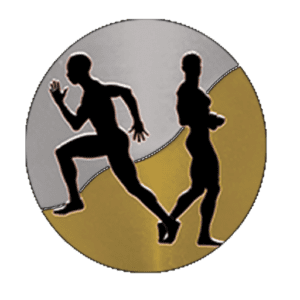On October 7th, 2015, after returning from a trip to Egypt with my wife, I underwent an ulnar nerve transposition surgery.
I had a serious ulnar nerve entrapment and most of the function in my left hand was completely gone. It was nerve-racking (no pun intended) to see my hand lose function every single day.
Fortunately, the ulnar nerve transposition surgery saved me and got me back into the iron game with no limitations.
Fading Fast
I trained with this ailment for a long time.
My workouts towards the end of the pre-surgery process were starting to become negatively impacted.
Any movement that involved a lot of gripping strength like heavy deadlifts, RDLs, and farmer’s walks were essentially off the table.
Even walking lunges and one-arm dumbbell rows were being excommunicated from my training program due to a lack of function in my hand.
Weighted pull-ups were still on the menu, but they were going from the entrée to an appetizer.
The inability to train the way I need to train was becoming a major hindrance.
Although I had been dealing with the ulnar nerve for the past year (2014), the issue had gotten decidedly worse.
Wintertime
As bad as it got in the gym, nothing compared to the pain of the winter time.
You see your nerves control your whole body and when your nerves are compromised you have nothing to offer.
What I found out early in the process is that the cold affects the nerves in a debilitating way.
I remember going out to shovel snow and having to take breaks every ten minutes because my hand would go completely numb.
I would have to go inside and warm up for 20-30 minutes just to go back outside and shovel for 10 minutes.
20-30 minutes of shoveling snow could take me up to 2 hours to complete due to the breaks. It was tedious to say the least.
Help
I decided to seek help in June 2015 after a masters’ track meet.
The situation had become so bad that when I was in the “set” position on the start line, I was shaking. I could barely hold myself up in that position because my hand was so weak.
My ulnar nerve entrapment was negatively affecting my training and also my life.
By this point trivial tasks, like holding a cell phone, pushing down the button on the toaster, and opening a door were becoming impossible.
If I was in an emergency, and you had asked me to dial 911 with my left hand at this time, I could not have done it. My hand was about as useless as a shooting guard who cannot shoot in the NBA.
I went to see the great Dr. Moody Kwok at Rothman Orthopedic in Willow Grove, Pa.
Dr. Kwok assessed me and let me know that surgery was probably going to be my only option. My condition had deteriorated to the point where other treatments would have had zero impact.
I did electrodiagnostic testing on my arm prior to the surgery, and it confirmed what we both knew: my ulnar nerve was compressed, my left hand had limited function, and the muscles in my hand were deteriorating.
We set a date for October 7th, 2015 to do the ulnar nerve transposition and get the job done.
Recovery
For the first 24 hours after the surgery my arm was numb from the nerve block the doctors injected into my arm.
My arm felt like it weighed 75lbs sitting in that sling!
I had to keep a soft cast on for 10 days to let the incision in my arm heal. They had to cut through my forearm so my arm was weak.
But during those 10 days, I did not sit on the couch and start feeling sorry for myself. After the anesthesia wore off, I was back at the gym training clients the day after surgery.
They were shocked to see me, but outside of me being in a full-body cast, I was going to be there.
I also did not miss any of my own workouts either. Even though I could not train my upper body, I could train lower body.
My lower body workouts were a steady diet of bodyweight squats, lunges, glute-ham raises, and hip thrusts.
I also did dynamic jump squats and alternating lunge jumps.
To allow my legs to feel some weight, I was forced to add in some hack slides, leg extensions, and leg curls.
I’m not anti-machine, but these moves are much lower on the food chain than my traditional exercise choices.
Day 10
On day 10, I went back to Rothman to get my soft cast removed.
Dr. Kwok did not recommend any physical therapy for me. After our conversations about training and recovery he recognized that I would be able to heal myself in this scenario.
When I got home the first thing I did was to try to do some push-ups. I struggled to get to 5 reps, but I was not deterred.
The next day I did 6 reps and the day after that I did 7 reps.
The next day after that I did a dips and pull-ups workout.
I was not as strong as I previously was in either move, but I was able to do them both.
I tried to do chin-ups, but they hurt too bad. So I canned them for the day.
Some people tried to say I started working out too quickly after surgery. They scoffed at me.
I know my body better than anybody in the world. I was not going to put myself in a position to injure myself, but I also was not going to sit around and do nothing except whine for many weeks and months.
Winners win and losers lose. The scoffers are in the same place they were in 5 years ago: going nowhere fast.
It’s All In The Mind
A few weeks after surgery I could barely bench 135lbs for 5 reps. It was embarrassing considering that my best bench ever is 260lbs.
Over time, I regained my strength back (and some) in all of my upper body movements. My dips, chin-ups, incline bench presses, and barbell rows are all back.
I looked at this ulnar nerve entrapment surgery as a hurdle.
In life, you are either in a problem, about to be in a problem, or just solved a problem.
Now in 2013 and 2014, I was going into the problem.
And 2015, I was 100 percent into the problem. And in 2016, the problem had been solved.
For anybody who is about to have an ulnar nerve transposition, your recovery is heavily dependent on your mindset.
If you go into it with a poor, defeatist mindset you will slow down your recovery efforts.
But if you go into it with a positive mindset, you can overcome this surgery. The first few weeks are dreadful, but success requires struggle.
Your attitude will become your reality.
I have minimal daily issues at this point.
I can do everything I previously could do in the gym and in life.
The winter time and opening jars is still a challenge at times, but it’s not even close to as debilitating as it was before.
I’d say I’m currently at 80-85 percent function vs. the 20-30 percent function I was at prior to surgery. I’ll take that any day of the week.
Conclusion
When I released the first status update, I was just filming what I thought was a simple update video.
I had no idea that the video would touch so many people. I want to thank all the people who left comments, messages, and emailed me.
If you are about to have this procedure done, consult with your doctor or even call my doctor, Moody Kwok, M.D. to find out what steps would be appropriate for you.
I’ll holla at you next time.
The People’s Trainer,
Fitman



Do you remember the instructions your doctor gave you regarding the weight that can be lifted using that arm post-op? how did you progress from not being able to lift at all to feeling strong again? What do you mean by 85% function, in little more detail? Excuse the long message. Im glad to hear You are happy with the results and back on track!
Hey,
Great to hear that things worked out for you.
Do you know what kind of transposition you got? Subcutaneous or submuscular?
Greetings
Flo,
Thanks for the kind words. My transposition was submuscular.